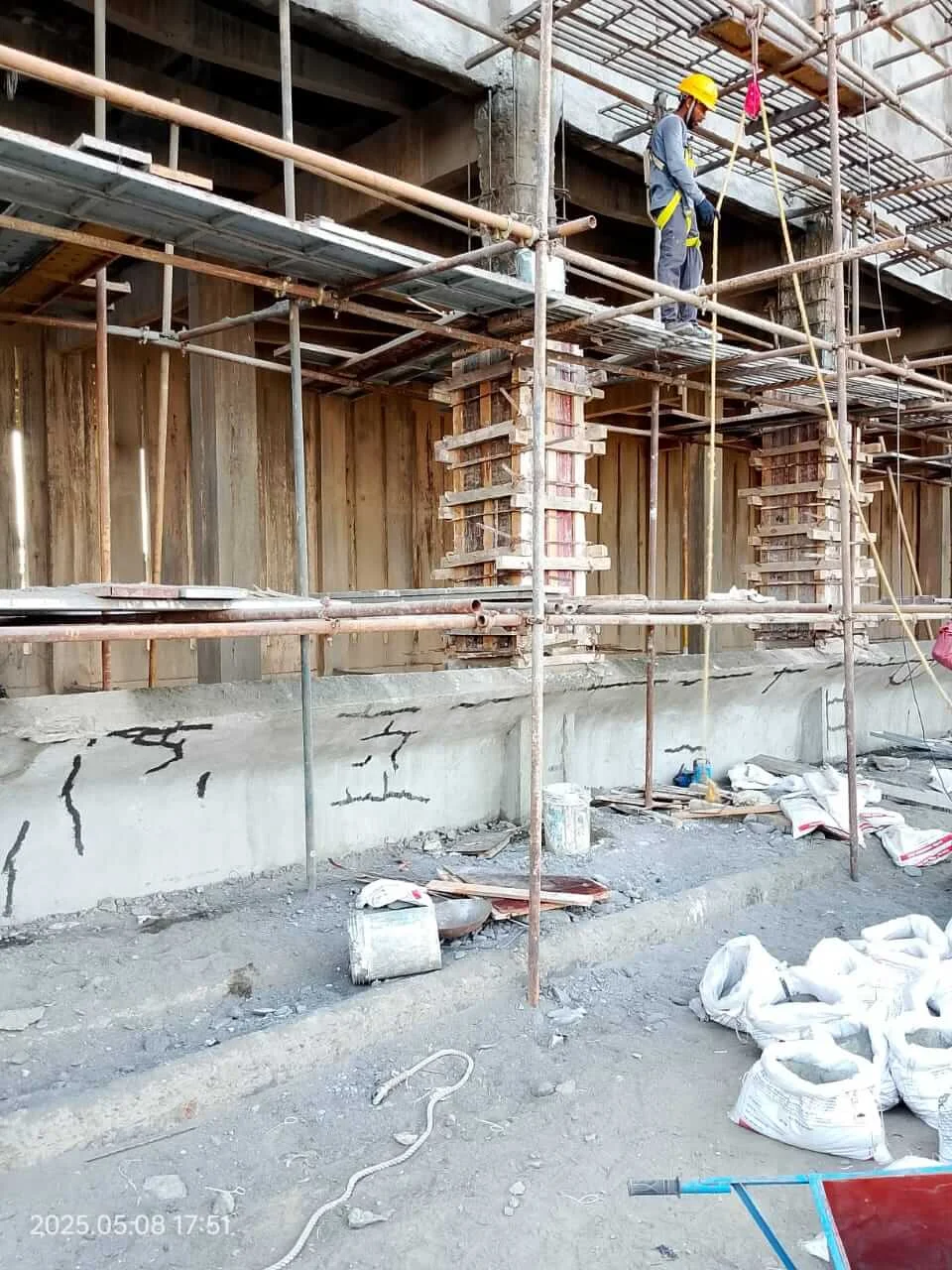Structural integrity is essential for any building, and columns are the backbone of this stability. Over time, columns may develop cracks, corrosion, or weakening due to environmental stress, design flaws, or increased load requirements. Column jacketing is an effective solution to restore and enhance their strength. This technique ensures the building can safely carry the intended loads while extending the structure’s lifespan.
What Is Column Jacketing?
Column jacketing is a method used to increase the load-carrying capacity of reinforced concrete or RCC columns. It involves encasing the existing column with additional material such as reinforced concrete, steel, or fiber-reinforced polymers. This process not only strengthens the column but also provides protection against further damage. Engineers often recommend it when buildings undergo renovation, load modifications, or structural retrofitting.
Why Column Jacketing Is Necessary
Aging structures or columns exposed to heavy stress can fail if not reinforced. Common issues include spalling, corrosion of steel reinforcements, and shear cracks. Column jacketing addresses these problems effectively. It prevents sudden structural failure and ensures safety. In urban areas, where buildings face constant load variations, jacketing provides an affordable solution compared to rebuilding the entire structure, making it a practical choice for engineers and property owners.
Methods of Column Jacketing
There are several methods to jacket columns, each suited to specific situations. Traditional reinforced concrete jacketing involves increasing the column’s cross-section with additional concrete and steel reinforcement. Steel plate jacketing uses high-strength steel plates to wrap the column for immediate load support. Fiber-reinforced polymer (FRP) jacketing is a modern approach, offering lightweight, corrosion-resistant solutions with minimal impact on aesthetics. The method is chosen based on budget, structural condition, and load requirements.
Advantages of Column Jacketing
Column jacketing offers multiple benefits beyond strength enhancement. It significantly increases the axial and lateral load capacity of columns. The process also improves durability against environmental hazards such as moisture, chemical exposure, and seismic forces. Additionally, column jacketing is less disruptive compared to demolishing and rebuilding structures. It provides a cost-effective way to meet updated building codes or accommodate increased loads in commercial or residential projects.
Signs You Need Column Jacketing
Identifying the need for column jacketing is crucial for timely intervention. Visible cracks, exposed or corroded steel reinforcements, uneven settlement, and reduced load-bearing capacity are clear indicators. If a structural assessment shows columns failing to meet safety standards or if renovations increase the building’s load requirements, column jacketing becomes necessary. Acting promptly prevents structural hazards, ensures compliance with safety regulations, and extends the life of the building.
Steps Involved in Column Jacketing
The column jacketing process starts with surface preparation, including cleaning and removing damaged concrete. Next, additional reinforcement is provided around the existing column. For concrete jacketing, new concrete is poured and cured properly. Steel plate jacketing involves bolting or welding steel plates, while FRP jacketing requires wrapping fibers with epoxy resin. Post-application inspections ensure proper bonding and strength. Each step is crucial for achieving long-term durability and structural safety.
Applications of Column Jacketing
Column jacketing is widely used in residential, commercial, and industrial buildings. It is particularly effective in seismic-prone areas where structural stability is critical. Renovation projects often require jacketing when the original columns cannot handle increased loads. It is also applied in heritage buildings where maintaining the original structure is important. Industrial facilities with heavy machinery or warehouses with large storage demands frequently use column jacketing to support structural loads safely.
Column Jacketing vs. Other Strengthening Techniques
While column jacketing is highly effective, other strengthening methods like external post-tensioning, underpinning, or chemical grouting also exist. Compared to these methods, jacketing offers direct improvement in load capacity without altering the building’s foundation. It is versatile, suitable for both small and large columns, and can be combined with other techniques for enhanced performance. Engineers often prefer jacketing for retrofitting projects where safety and minimal disruption are priorities.
Maintenance After Column Jacketing
Once column jacketing is completed, proper maintenance ensures long-term effectiveness. Regular inspections should check for signs of cracking, moisture infiltration, or material degradation. For steel or FRP jacketing, protecting the surface against corrosion and UV damage is important. Any minor repairs should be addressed promptly to prevent weakening. Maintenance ensures that the reinforced columns continue to meet structural requirements and contributes to the overall safety and longevity of the building.
Column jacketing is a practical and reliable solution to restore and enhance structural stability. By strengthening weak or damaged columns, it prevents potential failures and ensures compliance with safety standards. With options like reinforced concrete, steel, and FRP jacketing, property owners can choose methods suited to their needs and budgets. Timely intervention not only prolongs the lifespan of the building but also provides peace of mind for residents, occupants, and investors alike.


